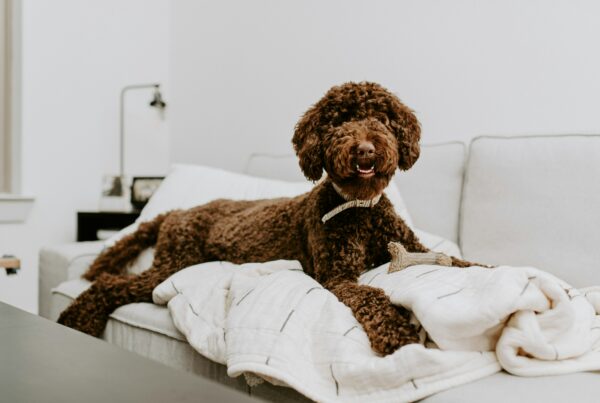If this winter is anything like last winter, New Yorkers and their pet pooches will face a cold season with at least 30 inches of snow. And as the cold creeps in, it’s common for the state’s dogs to develop seasonal affective disorder. SAD can change a dog’s behavior, eating habits and overall mood. Therefore, it’s crucial you take steps to combat your dog’s undesirable behaviors such as biting and food aversions. Also with the sun setting in NYC as early as 4:30pm and most pet parents not getting home until 5pm at the earliest, its important to take into consideration the amount of sunshine, outdoor time and vitamin D your pup is intaking.
Understanding SAD in dogs
The People’s Dispensary for Sick Animals (PDSA) report that 40% of dog owners state that their dog’s mood takes a downturn throughout the winter. Meanwhile, 50% say that their dogs sleep longer when it’s cold outside, while two in five notice a decline in their dog’s activity levels. There are multiple causes for SAD in dogs. Experts state that dogs pick up on their owners’ behavior and habits, which typically become more lackluster in the winter. But by simply enrolling your pooch in doggy daycare, his mood will be lifted as he’ll be around multiple dogs eager to play and have fun, as well as enthusiastic nannies keen to boost your pet’s spirits.
A change in behavior
A dog with SAD will exhibit a range of behaviors. You may notice destructive chewing or biting which is often the result of boredom. Your pup may also not seem as interested as he is with his regular delights such as getting a treat after going to the bathroom or running to greet you when you come through the door. Winter can be a boring time for dogs as you’ll both generally spend more time cooped up in the house. Therefore, finding ways to combat boredom is essential to ensure that your dog remains happy.
Making lots of time for play is a wise move as is keeping the dog walks engaging while avoiding the salt ridden sidewalks with ample time for sun exposure (not just a potty break). Dogs may have more accidents in the home due to the reduced walk time outside. Ensure you’ve got an ample supply of dog toys available so that your pooch can have fun running around after a ball in your living room and chewing a bone in his bed. By signing up to a subscription box, you’ll always have something new to share with your hound over winter. And he can even take his favorite toy to daycare with him.
Feeling hungry
One in four dog owners states that their hound’s appetite increases during the winter months. However, excess food and inactivity can result in your dog becoming overweight or obese. In turn, various health conditions, including arthritis, can occur. Therefore, encouraging your pet out of his depressive winter mood is a must. Call upon a professional dog walking service to keep your pet stimulated during the cold winter days while you’re at work. And don’t overindulge your pet with food, even when he’s begging for more, as overeating can cause additional lethargy which will contribute to your dog’s low mood.
Combatting SAD in dogs
Choose a dog walker or doggie daycare with a large window or outdoor time that will allow for your pup to move their bodies, get chances to get exposure to the sun and vitamin d from the source for a few times per week. Another option is give your pup access to look outside the window by putting a piece of furniture with a pillow so your pup can sun bathe or at least increase the times he/she can be closer to the sunlight.
Dogs are susceptible to SAD during the winter months and this can lead to a change in behavior and mood. By plying your pet with trips to daycare, new toys, and multiple walks, you should see a shift in behavior in no time. You know your dogs likes and what makes him/her happy– monitoring any change in behavoir while taking into account the seasons is a good place to start getting your dog’s mood back to normal.
This article was contributed by Jane Wood.




